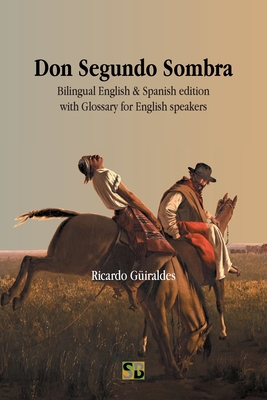Don Segundo Sombra is presented as a bilingual, Spanish/English book, with side-by-side texts. This book shows how a rebellious teenager transforms himself into a gaucho of the pampas, under the guidance of Don Segundo Sombra, the image of the ideal gaucho. The gauchos loved their freedom, they were nomads who wandered through the fields, at a time when there were no fences and wild cattle abounded, which allowed them to live off the land. They only looked for temporary work in a ranch, when they needed some money. The figure of the gaucho always appears linked to the horse; they were excellent riders and wranglers. When the fields were wired and the railway connected the pampas with the rest of the country, well into the 19th century, the gaucho lost his freedom and the way of life portrayed in this book came to an end. The original edition of Don Segundo Sombra doesn't have a Table of Contents because although the book is divided in 27 chapters, they have no titles. To help readers locate easily the different parts of this book we added a TOC with titles for each chapter, but such titles are no part of the original book. There are two other English translations of this book, the 1935 translation by Harriet de Onís, published by Signet in 1966, with an afterword by herself and the 1995 translation by Patricia Owen Steiner, accompanied by extensive critical materials, published by the University of Pittsburgh. Both translations, although very good, are out of print but also, they were not written by people familiarized with the gaucho culture of Argentina, which made them not very faithful to the original text. Don Segundo Sombra was written by an educated man who used the real language spoken by the gauchos of the XIX century; this complicates the translation of this book because it is full of colloquialisms and jargon. This translation is the first one written by an Argentinean, familiar with the cultural and gaucho jargon of the time. Some words couldn't be translated properly, because there are not English words for them, in such cases the Spanish word was not translated, but its meaning is explained in the Glossary. All words included in the Glossary are underlined. Also, the same words can mean different things in different places and times, those Spanish words who don't have the normal meaning in the time and place of this story (the province of Buenos Aires, in some moment of the XIX century), also were underlined in the Spanish text and added to t










